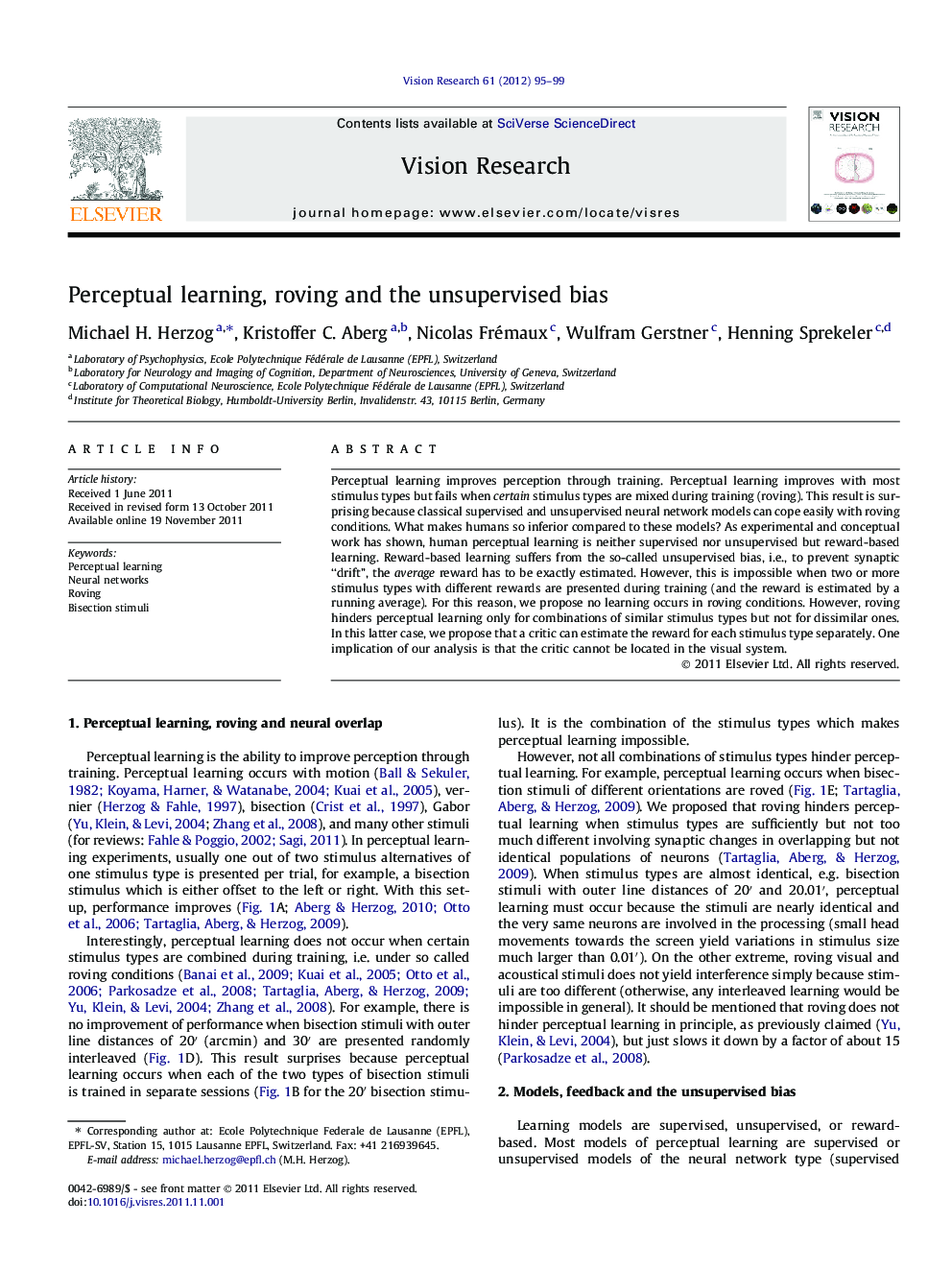| کد مقاله | کد نشریه | سال انتشار | مقاله انگلیسی | نسخه تمام متن |
|---|---|---|---|---|
| 4034013 | 1603233 | 2012 | 5 صفحه PDF | دانلود رایگان |

Perceptual learning improves perception through training. Perceptual learning improves with most stimulus types but fails when certain stimulus types are mixed during training (roving). This result is surprising because classical supervised and unsupervised neural network models can cope easily with roving conditions. What makes humans so inferior compared to these models? As experimental and conceptual work has shown, human perceptual learning is neither supervised nor unsupervised but reward-based learning. Reward-based learning suffers from the so-called unsupervised bias, i.e., to prevent synaptic “drift”, the average reward has to be exactly estimated. However, this is impossible when two or more stimulus types with different rewards are presented during training (and the reward is estimated by a running average). For this reason, we propose no learning occurs in roving conditions. However, roving hinders perceptual learning only for combinations of similar stimulus types but not for dissimilar ones. In this latter case, we propose that a critic can estimate the reward for each stimulus type separately. One implication of our analysis is that the critic cannot be located in the visual system.
► Perceptual learning is reward based learning.
► Reward based learning suffers from the unsupervised bias problem.
► The unsupervised bias problem explains roving.
► The unsupervised bias problem requires a critic.
► The critic cannot be located in the visual system.
Journal: Vision Research - Volume 61, 15 May 2012, Pages 95–99